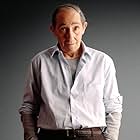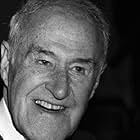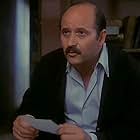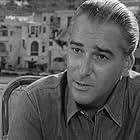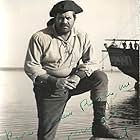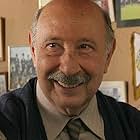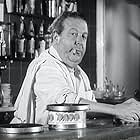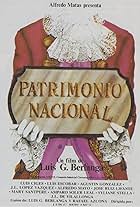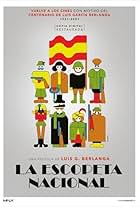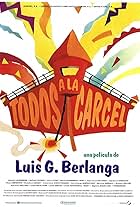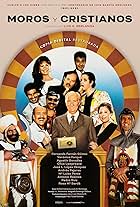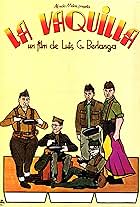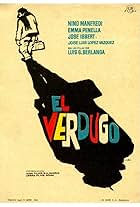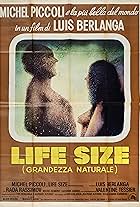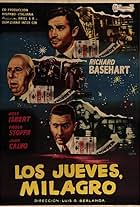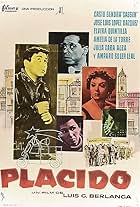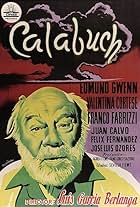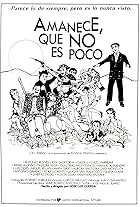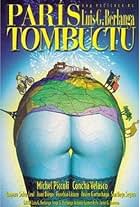After being forced to sell his palace, the Marquis of Leguineche moved to an apartment with his son Luis José, his faithful servants and Father Calvo. When the father of Luis José dies, leav... Read allAfter being forced to sell his palace, the Marquis of Leguineche moved to an apartment with his son Luis José, his faithful servants and Father Calvo. When the father of Luis José dies, leaving his entire fortune to Chus, the daughter of the Marquis, the Leguineche family go to E... Read allAfter being forced to sell his palace, the Marquis of Leguineche moved to an apartment with his son Luis José, his faithful servants and Father Calvo. When the father of Luis José dies, leaving his entire fortune to Chus, the daughter of the Marquis, the Leguineche family go to Extremadura to attend the funerals and promote the reconciliation of the couple. Achieved t... Read all
Photos
Storyline
Did you know
- ConnectionsFeatured in ¿Dónde estabas entonces?: 1985 (2018)
After getting success with ¨Escopeta Nacional¨ and "National Heritage" and a great popularity by Luis Escobar playing the offbeat marquis , it led to filmmaker Berlanga , writer Azcona and producer Alfredo Matas to make this third outing , dealing with the national policy : Febrery 23, 1981 coup d'etat , about the power rising of Socialists with Felipe Gonzalez , and tax evading using the special train of pilgrims going to Lourdes . In the flick there are especially busy comedy , ironical humor , frantic pace , amusing gags , rowdy satire about an odyssey to evade paying taxes , strange roles , noisy hustle and social critical . Furthermore , it contains certain confusion and relies heavily in exaggerated mayhem ; being in anyway clearly inferior to former films . One time finished the Franquist dictatorship , Berlanga along with his regular screenwriter Azcona carry out the realization a known trilogy about the political and social Spanish situation , concerning on the peculiar aristocratic family of the Marquis of Leguineche . Shot in long , complex shots : ¨Planos Secuencia¨, with a lot of rare roles talking , shouting and walking . The main and support actors stand out under perfect direction of Berlanga , including a bitter , pessimistic mirror on the Spanish society by that time and of the ambitious aristocracy , especially . We can find very fun roles , all of them caricatures and mirrors of the Spanish society . The movie displays a Spanish star-studded , such as : the egoistic Jose Luis López Vázquez , the loud-mouthed priest Agustin González (Berlanga's also regular), Amparo Soler Leal (married to producer Alfredo Matas) , Chus Lampreave (Almodovar's ordinary), and , of course , Luis Ciges . Berlanga's conceptual and political audacity, so evident in this film that achieved a considerable hit . It turned out to be a nice picture plenty of diverting situations as well as black humor and social hypocrisy .
Direction by Luis Garcia Berlanga is acceptable but inferior to precedent films , including a bitter , pessimistic mirror on the Spanish society by that time . Made in similar style to Italy comedy of the 50s and 60s that was previously brought by Rafael Azcona in Spain . Luis shows his skill for edition , realizing long shots with crowd who moves easily . The long Berlanga's career began during the 50s when filmed several polemic movies , all of them were beset by difficulties with the censors caused by real critical to social stratum such as ¨Bienvenido Mister Marshall¨ (1953) , a very good film which tended not to be very well received by the censor for its acidity and considered to be one of the best Spanish films of the history , including a strong portrait of society and plenty of sharpness . His next was ¨Los Jueves, Milagro¨ (1957), it delayed for several years before its eventual release . Subsequently , he made ¨Placido¨ (1961) , this is the film debut for the great producer Alfredo Matas and received an Oscar nomination in 1963 , being well-received at the International Festivals , reviewing the useless charity . Later on , Berlanga made one of his best films: ¨El Verdugo¨ (1963), one of the undisputed masterpieces and fundamental in filmography of Berlanga and shot at the height of his creativity , in a period cultural difficult, where the enormous censorship of the political regime, exacerbated the ingenuity and imagination of the scriptwriters . He continued filming other interesting pictures as in 1973 he went to Paris to begin filming ¨Grandeur nature¨ with Michael Piccoli , another problematic film here very far from the tenderness carried out in previous works , focusing this time on the fetishism of a man who falls in love with a doll . Several years later , after Franco's death and one time finished the Franquist dictatorship , Berlanga along with his regular screenwriter Azcona carry out the realization a known trilogy about the social Spanish situation , concerning on the peculiar aristocratic family of the Marquis of Leguineche where he clarified the evident disorders in the Spanish upper , middle-class upon being confronted with a new political status-quo , realizing a sour denounce of the Spanish society . He also shot a peculiar film titled ¨La Vaquilla¨ (1985) set in the Spanish Civil War , resulting to be the first time dealing with this convulsive period in comedy style . Following the same themes, he went on filming coral films such as ¨Moros and Cristianos¨ and ¨Todos a Carcel¨ (1993) that won three Goya Awards for Best Film, Best Director and Best Sound .
Details
- Release date
- Country of origin
- Official site
- Language
- Also known as
- National III
- Filming locations
- Production companies
- See more company credits at IMDbPro
- Runtime1 hour 42 minutes
- Aspect ratio
- 1.66 : 1
Contribute to this page


